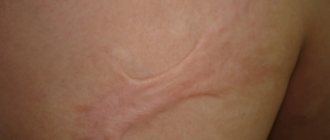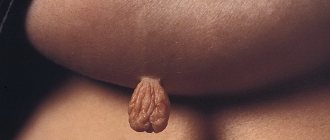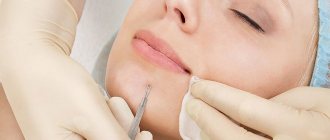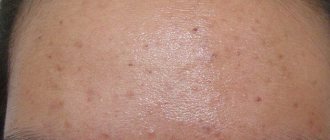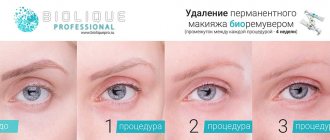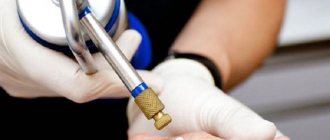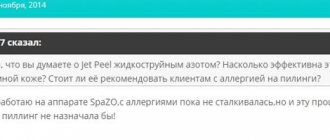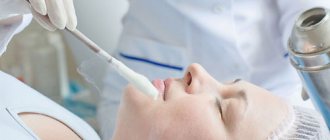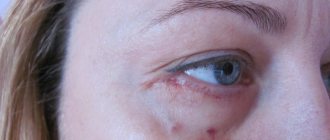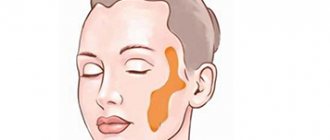Removal of skin tumors with liquid nitrogen is considered one of the safest, simplest and most effective methods of treatment, including warts and other types of skin growths caused by human papillomavirus infection. Some strains of human papillomavirus (HPV) cause malignant tissue transformation, especially when the tumor is damaged and an inflammatory reaction occurs. Therefore, it is recommended to remove warts with liquid nitrogen in a timely manner, and in our Healthy Family clinic it can be done there at an affordable price.
We use innovative equipment from well-known European brands, are always open to communication with our patients and advise each of them in detail on the preparation, conduct and recovery after minimally invasive operations.
Cryotherapy and cryodestruction in the treatment of ENT diseases
The practice of recent decades has shown that for some diseases of the ENT organs, treatment with cryotherapy (from the Greek “krios”, i.e. cold) is a real and effective replacement for traditional surgical techniques. Cold treatment is based on the destruction of pathological tissues by ultra-low temperatures.
What is the difference between cryotherapy and cryodestruction? To begin with, let us clarify that both of these procedures are carried out using liquid nitrogen. Liquid nitrogen is a transparent liquid, colorless and odorless, with a boiling point of -195.8 C°. At normal atmospheric pressure it is non-flammable and does not burst.
So, the basis of the therapeutic effect of liquid nitrogen is its low temperature. Depending on the method of application, its effect on tissue varies. During cryodestruction, freezing can cause destruction (destruction) and death of tissue; this requires a longer, more than 30 seconds, exposure of the applicator over the removed element (tissue area). But with cryotherapy, short-term (10-15 seconds) freezing only causes a narrowing of blood vessels, followed by a response expansion of not only active, but also reserve capillaries, which significantly increases blood flow to the site of cryotherapy.
Cryostimulation
When discussing the effect of low temperature on cells and tissues, one cannot ignore the phenomenon of cryostimulation, that is, stimulation of the immune system caused by cold. This phenomenon has been observed during cryotherapy treatment of neoplastic tumors.
For example, regression of nonfrozen metastases has been observed during palliative treatment of melanoma with multiple cutaneous metastases. This has been associated with the emergence of cytotoxic lymphocytes and other immune cells that target tumor cells. This phenomenon is currently explained by two mechanisms:
- The release of numerous cytokines and other immunogens destroyed by freezing tumor cells may promote the development of mature effector cells and increase the expression of ICAM adhesion particles as well as MHC particles on neoplastic cells (which have been demonstrated to be absent or reduced in many cases).
- Increased expression of MHC class II antigens and activation of CD4+ helper cells and antigen presenting cells. This could lead to the stimulation and maturation of cytotoxic lymphocytes that destroy distant tumor metastases.
ONLINE REGISTRATION at the DIANA clinic
You can sign up by calling the toll-free phone number 8-800-707-15-60 or filling out the contact form. In this case, we will contact you ourselves.
Cryodestruction technique
During cryodestruction, only two methods of deep local cooling of pathological tissues are fundamentally possible: direct exposure of the tissue to liquid nitrogen or freezing with an applicator (metal tip), which is actively or passively cooled by liquid nitrogen. However, there are many variations of these methods. The choice of the optimal method of cryotherapy is made by an ENT doctor at an appointment, after a thorough examination of the patient, as well as conducting the necessary clinical examinations.
As a general rule, the time required for cryotherapy is determined by the nature and severity of the pathological process at the site of exposure.
During cryodestruction, freezing can be performed using the one- or two-cycle method. Usually a single cycle (one-time) exposure is sufficient. However, with a common pathological process, a two-cycle effect is sometimes used. In this case, tissues are re-frozen 10-15 minutes after the first one. This technique enhances the destruction of underlying (underlying) tissues and subsequently leads to a good clinical effect.
Possible side effects
If safety rules are violated or the session time is increased, dermatitis or frostbite of some areas of the skin may develop. If such reactions are detected, the patient must inform the specialist who performed the procedure about them and refuse cryotherapy until the skin is completely restored.
The body must be completely dry during the general cryotherapy procedure - moisture attracts liquid nitrogen, and its particles adhere firmly to the surface of the skin. Therefore, during the session, special attention is paid to protecting the face.
More fresh and relevant information about health on our Telegram channel. Subscribe: https://t.me/foodandhealthru
We will be grateful if you use the buttons:
Patient's condition after the procedure
Most patients experience no complications after cryodestruction; the manipulation is well tolerated by patients. Wound healing after cryodestruction occurs according to the type of aseptic exudative inflammation. This explains the fact that on the first day after surgery, body temperature may rise to subfebrile levels (37-37.2 degrees).
Pain in the throat may last 3-4 days. The maximum pain disappears within the first day. Every other day, a gray coating may appear, which disappears in 5-10 days.
If pain occurs at the site of exposure, the patient is usually prescribed painkillers, taking into account individual tolerance.
Indications
Quite often, nevi are found on parts of the body that are systematically injured or negatively affect a person’s appearance. Infectious pathogens can enter the systemic bloodstream through damaged tissues; less often, violation of the integrity of a birthmark is dangerous due to prolonged bleeding. The risk of malignancy of a mole cannot be completely excluded, and therefore it is better to get rid of some of them in a timely manner.
Indications for cryodestruction with liquid N2 are determined by a specialist after examining the patient. Less commonly, cytological examination of nevus cells is prescribed. The main indications for cryodestruction are:
- Frequent nevus injury.
- Aesthetic reasons.
- Discomfort, bleeding in the mole area.
- Change in size, color, texture of the spot.
Cryotherapy technique
Today, cryotherapy is perhaps the only method that allows one to avoid surgical treatment and at the same time preserve the functions of the ENT organs.
Using a special tool - an applicator, the fabric is sharply cooled for 10-15 seconds.
The procedure is performed on an outpatient basis and lasts several minutes. Within a few minutes after the procedure, the person experiences a feeling of discomfort and pain. The patient's condition after the procedure is usually satisfactory.
The huge advantage of cryotherapy is that due to the immunostimulating effect of ultra-low temperature, rapid tissue regeneration occurs, and the condition of healthy surrounding tissues also improves. Local and general immunity is noticeably increased.
Scar removal: what is the pathology?
To carry out the procedure, it does not matter how the scar was obtained - trauma, careless handling of sharp objects, burns, as a result of a medical operation (including as a result of a cesarean section). However, the type of scar is important. There are four of them:
● normotrophic. This is a small, smooth scar that does not stand out tactilely against the background of healthy skin. In terms of removal, this is one of the most convenient options;
● hypo- or atrophic. The thickness of the skin in this place is much less than that of ordinary skin. Therefore, the scar quickly loses its shape, spreads in width and looks unattractive;
● hypertrophic. Such a scar contains an increased dose of connective tissue, so it feels dense and thick. Tactilely, the scar often rises above the healthy surface. In addition, it differs in color;
● keloid. The most difficult case that needs to be removed as soon as possible after its occurrence. A distinctive feature is the ability to grow and increase in size, which is why many people confuse a keloid scar with a tumor and consult an oncologist.
It is also common to distinguish scars by age. Young scars are those that were received no later than 3 months and no earlier than 5 years ago. Mature scars appeared on the body more than 5 years ago. Fresh damage is much easier to remove. However, old scars can also respond to cryotherapy, although several sessions may be required.
Cryotherapy will remove any scar, including keloids, but it is recommended to consult a doctor before visiting a cosmetologist. After all, the number of sessions and their duration depends on the type and size of the defect.
The use of cryotherapy for various diseases
Cold treatment is effective for many diseases of the ENT organs:
- chronic tonsillitis,
- recurrent nosebleeds from the nasal septum,
- vasomotor rhinitis,
- hypertrophy of the palatine tonsils,
- chronic hypertrophic pharyngitis,
- benign neoplasms of the nasal cavity, pharynx,
- skin diseases of the external nose and ears.
The most important thing is that there are practically no contraindications for cold treatment (except for acute inflammatory processes), and in some cases it is even carried out for pregnant women.
Benefits of cold treatment
Unlike other instrumental methods, cryotherapy:
- does not violate the integrity of the skin and mucous membranes, is non-invasive, and as a result there is no danger of contracting AIDS or hepatitis;
- It is much easier to tolerate than traditional surgery, almost painless, and does not require expensive pain relief;
- is bloodless, frozen pathological tissue is bloodlessly rejected in the process of natural restoration of the pharyngeal mucosa;
- provides a minimal risk of postoperative complications such as bleeding, formation of rough scars and adhesions in the delayed period;
- does not require hospital stay, does not reduce the patient’s ability to work (with the exception of professions associated with hypothermia or heavy physical exertion);
- gives a high cosmetic effect after wound healing;
- helps stimulate lymphoid tissue to restore and improve the immune status of ENT tissues;
- and most importantly, after cryodestruction, the mechanism of nonspecific and specific antitumor, antiviral, antimicrobial immunity is launched. Autoimmunization (autovaccination) occurs due to the absorption of decay products of pathological tissue and bacterial particles into the bloodstream.
Today, doctors at the Lor Plus clinic, using the latest cold techniques, can help you and your baby get rid of frequent colds, acute respiratory viral infections, chronic runny noses, as well as recurrent sore throats and pharyngitis.
Complications
There are practically no complications during cryoprocedures. Possible complications are mainly associated with an individual reaction to cold exposure (severe swelling of surrounding tissues) and the addition of infectious diseases in case of contact with a patient with an acute respiratory infection.
On a note! Specialists at the Lor Plus clinic have been providing cold treatment for decades. The accumulated experience in combination with modern diagnostic and treatment equipment allows us to assert that cryotherapy treatment is very effective for a number of ENT diseases, is practically painless and takes a few minutes. Cryotherapy today is perhaps the only method that allows one to avoid surgical treatment and at the same time preserve the functions of the ENT organs.
Make an appointment
